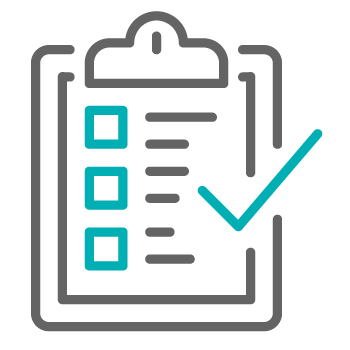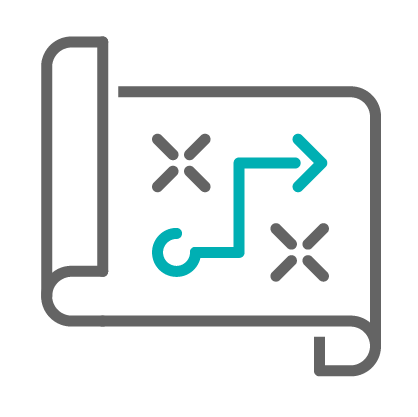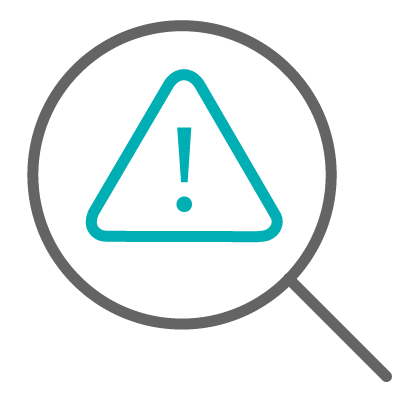Private sector organisations may also find many of the considerations and themes in the GenAI Guidance and AI Framework useful to inform their own strategy and approach to the adoption of AI.
The GenAI Guidance and AI Framework are consistent with the Government’s current focus on improving public service delivery, fiscal responsibility, and economic productivity and growth. They recognise the critical role that AI may have in the achievement of the Government’s targeted outcomes in each of these areas.
GenAI Guidance
The GenAI Guidance is structured into the following key sections:
- GenAI foundations – foundational aspects to support public sector agencies’ use and adoption of GenAI.
- GenAI and customer experience with Government – key considerations about GenAI systems that affect customer service experience with Government.
- Next steps for safe, responsible AI in Government.
Section 1: GenAI foundations
The GenAI Guidance describes the foundational aspects to support public sector agencies’ use and adoption of GenAI and provides examples of how each foundational aspect can be achieved. These can be summarised as follows:
|
Key foundational aspect |
Examples of how this can this be achieved |
|
|
|
|
|
|
|
|
|
|
|
|
|
|
|
|
|
|
Section 2: GenAI and customer experience with Government
The GenAI Guidance describes the key considerations about GenAI systems that affect customer experience with Government. These can be summarised as follows:
- Transparency – Agencies should be open with their people and the public about why and how they are using GenAI. This includes by publishing an up-to-date register of GenAI use.
- Bias, discrimination, fairness and equity – Agencies should proactively make sure their use of GenAI creates fairness and equity instead of biases and discrimination. This includes by using diverse teams, especially in the governance, deployment and use of GenAI, and checking all GenAI results and outputs for discrimination and to ensure that biases are not developing over time.
- Accessibility – The Government has legal and ethical obligations to create accessible information and services for the public and for public servants. In particular, agencies should include disabled people from the conception to deployment of GenAI and ensure the equitable treatment of disabled people.
- Privacy – Agencies must ensure their privacy approach to GenAI meets data protection rules and legislation. This includes by undertaking a Privacy Impact Assessment (PIA) for any new GenAI system to identify and manage the privacy risks, and ‘building by design’ – i.e., building and designing GenAI systems in ways that meet fundamental privacy principles and comply with data protection laws.
- Māori and indigenous data considerations – Agencies should protect personal data and ensure that it is not used to create bias or harm, having particular regard to Māori and indigenous data considerations. This includes involving iwi in the management and development of GenAI, and fostering Māori-led approaches to enhancing GenAI inclusivity.
Section 3: Next steps for safe, responsible AI in Government
This GenAI Guidance describes a range of other AI initiatives underway, and AI guidance, tools and resources currently under development. Notably, the Ministry of Business Innovation and Employment is currently in the process of preparing the ‘Responsible AI Guidance for Business’.
Key themes for agencies to consider throughout the AI lifecycle
The key themes from the GenAI Guidance, for agencies to consider throughout the AI lifecycle, are:
- Maintain Trust and Confidence – Consider how to safely, responsibly and transparently adopt emerging technologies like generative AI.
- Build by Design – Incorporate privacy, security and accessibility from the earliest planning and design stages, to ensure they are embedded in the foundations of any GenAI tool
- Engage Early – Engage with key stakeholders to ensure their needs and concerns are met when using GenAI.
- Strong Foundations – Invest in training, people, architecture and information management, and ensuring GenAI has access to high-quality data, in order to generate reliable and useful outputs.
- Testing – Before any significant investment, agencies should test and prototype tools to confirm they deliver the desired outcomes.
- Usual Rules Apply – Continue to refer to and comply with existing rules and guidance, such as the Government Procurement Rules, NZISM and the Public Records Act.
- Keep Humans in the Loop – To enhance accuracy, improve processes and ensure appropriate oversight of processes and outputs, agencies should involve humans at all stages of designing, training, testing, evaluating and moderating GenAI tools and their outputs.
- Connect with Others – Connect with others across the public service already using GenAI to share approaches, patterns and solutions.
Next steps
As AI and GenAI adoption increases, it will be critical that public sector agencies are seeking to update their existing frameworks, policies and processes to align with the GenAI Guidance and AI Framework. This includes ensuring that the agency’s overall strategy and policy for AI use and adoption aligns with the GenAI Guidance and AI Framework.
Similarly, private sector organisations may also look to the GenAI Guidance and AI Framework, as they plan their own strategy and approach to AI use and adoption. It will be particularly important for private sector agencies that provide (or may provide) technology systems and services that involve AI to public sector agencies to be cognisant of the GenAI Guidance and AI Framework, including as part of developing their relevant service offerings and associated procurement proposals.
We also understand that the Government is currently in the process of developing additional practical AI tools and guidance, including the AI Assurance Regime and Responsible AI Guidance for the business community. We expect these tools and guidance (once developed) to be useful for agencies and the broader business community – particularly in the case of the AI Assurance Regime, to provide a framework for undertaking a risk assessment process for new AI tools and systems.
Bell Gully has a specialist AI group that is closely monitoring AI developments relevant to New Zealand public and private sector organisations. If you have any questions, please get in touch with the contacts listed, or your usual Bell Gully adviser.



 Governance – Agencies should commit to good oversight and governance of the use of GenAI.
Governance – Agencies should commit to good oversight and governance of the use of GenAI. Security – Agencies should identify and mitigate the security risks associated with GenAI.
Security – Agencies should identify and mitigate the security risks associated with GenAI. Procurement – Agencies should implement procurement best practice for GenAI procurement.
Procurement – Agencies should implement procurement best practice for GenAI procurement. Skills and capabilities – Agencies should build the skills and capabilities of GenAI across the organisation.
Skills and capabilities – Agencies should build the skills and capabilities of GenAI across the organisation. Misinformation and hallucinations – Agencies should ensure they can access high-quality information, to avoid GenAI generating inaccurate and/or incomplete outputs (and avoid the spreading of misinformation).
Misinformation and hallucinations – Agencies should ensure they can access high-quality information, to avoid GenAI generating inaccurate and/or incomplete outputs (and avoid the spreading of misinformation). Accountability and responsibility –Agencies should integrate human oversight across GenAI use, particularly when Gen-AI is being used for decision-making.
Accountability and responsibility –Agencies should integrate human oversight across GenAI use, particularly when Gen-AI is being used for decision-making.